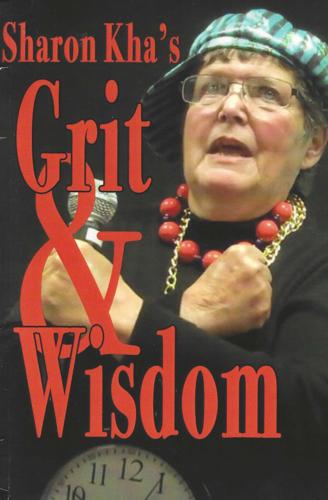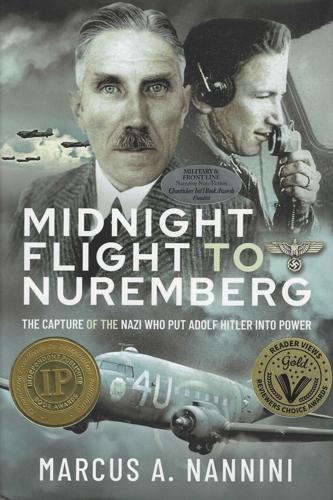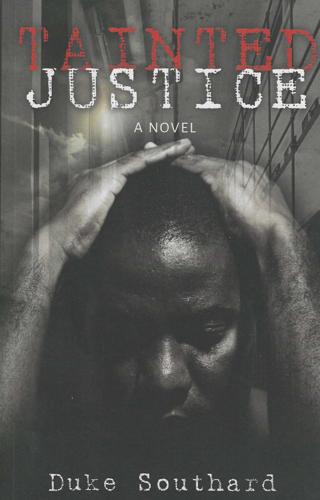“Michael Moore Drawings” by Paul Gold and Michael Moore. Tubecat LLC. 72 pages. $40.
For this reviewer, professionally-unequipped to render judgment beyond “I like it” — or not — on visual art, this collection of drawings includes a welcome boon: witty, informative commentary. With 70 photographs of 50 years of Oracle artist Michael Moore’s charcoal landscapes, the volume complements its detailed and dynamic mountain, desert and seaside images with Moore’s droll insights. Water, for example, is a favorite subject for his plein-air drawing. How does an artist depict its motion, or handle the mosquitoes, endemic around water? Draw what the water is doing, writes Moore, rather than how it looks; and plant your easel mid-pond: mosquitoes avoid hungry fish. How does he create the halo-like effect around prickly-pear needles? “Paint it with an eraser.” What do you do if you come across an artist at work? Let him work. Don’t try to chat. “Sometimes,” Moore’s writes, “I’m glad God made other people and sometimes I’m not.”
And about this collection of work? I like it.
— Christine Wald-Hopkins
“Nighthawks and Other Stories” by Gavin Kayner. Serendipity Productions. 94 pages. $15 Kindle.
Ekphrases are entertaining. Literary descriptions based on visual art can prove both good exercises and creative new collaborations. The reader normally expects the writer to focus on the immediate scene — for example, what are the late night diners in Realist Artist Edward Hopper’s iconic diner-through-the-window painting “Nighthawks” saying or thinking, or what’s going on in the waiter’s mind? In “Nighthawks and Other Stories,” however, fiction writer Gavin Kayner adds another element: historical context. Each of the 10 ekphrases in this chapbook — all responses to Edward Hopper paintings — has a particular historical setting. From 1927 to 1955, they reflect the outside world: Prohibition, the Great Depression, World War II, the post-nuclear world. Including the history — even tangentially — materially deepens and enriches Kayner’s very satisfying tales.
— Christine Wald-Hopkins
“Sharon Kha’s Grit and Wisdom” by Sharon Kha. Independently published. 234 pages. $20.
You might remember her as a diminutive news reporter on KGUN-TV, back in the ’70s, or as the spokesperson for the University of Arizona for two decades. She still looks diminutive, but she’s now a 70-something, tricked-out dynamo, “rapping” to beat Parkinson’s disease. Collected from essays for her esteemed writers’ group, her “Grit and Wisdom” is a collaged memoir — comprised of childhood memories, news reporter’s recollections, a romance/adventure/mystery, thoughts on writing, reflections on living with an incurable disease. Even a glossary of rap lyrics and commemorative poems.
Kha knows communications, and this book engages throughout. From her childhood as the stage-loving daughter of a Mennonite preacher through the reporter gleaning 90-second TV spots from a chaotic newsroom, to her interactive raps (“when I say ‘Parkinson’s’ you say ‘Don’t give in!’”), Kha tells a good story. The most memorable is that romance/adventure/mystery. No spoiler here, but it involves the final flight of an unpressurized, unheated B-29 (think WWII bomber) from Tucson to England in the winter: Suspenseful and surprising, it alone is worth the price of admission.
— Christine Wald-Hopkins
“Shopping Cart Dreams” by Gene Twaronite. Kelsay Books. 120 pages. $19.
Found poems. Sestinas. Ekphrases. Sonnets. Prose poems. Free verse. Gene Twaronite serves up variety in this collection of nearly six dozen poems. His tone conversational, his topics drawn from observing life around him, Twaronite’s work is accessible. His found poems, for example: They’re drawn from dictionary definitions of the word “turn,” from U.S. State mottos, from scathing online book reviews. They’re sometimes absurdist — the shared-brain anecdote being one; sometimes touching (his father gathering the family together to watch the primroses bloom), his poems represent the mind of a man reflecting on what he takes time to see.
— Christine Wald-Hopkins
“America’s 1890s Parachute Queen: Pioneer Skydiving Sensation Miss Hazel Keyes” by William D. Kalt III. Universal Publishers. 182 pages. $25.95, $9.99 Kindle.
From the annals of little-known but highly entertaining American history comes the story of the audacious Hazel Keyes who, in the 1890s, made a name for herself by parachuting from hot air balloons. Tucson author William Kalt clearly knows a good story when he sees one: he offers a well-documented profile of a woman whose name might have been lost but for this lively retelling.
Aeronauts, as they were called, “jumped for coin and glory. It was ‘America’s Cavalcade of Crazy,’” observes Kalt, who has an exuberant way with words. Crowds gathered at state fairs and July 4th celebrations, “eager for death-defying entertainment.” Whether the aeronaut landed safely, spectators were sure to get their money’s-worth.
It was not an activity for the risk-averse, which Keyes apparently was not: the balloon was positioned over a fire made to roar with liberal applications of gasoline and naphtha; the parachute (still very much in beta development) dangled beneath, and the aeronaut dangled from that; cut from its moorings, the balloon — with parachute and jumper — rose thousands of feet in the air until the jumper cut loose and plummeted earthward, to accolades or certain death, depending on which way the wind was blowing. Literally.
You can’t make this stuff up — and Kalt, who delved deeply into the newspapers of the day, has the extensive reportage to prove it. When Keyes finally retired from parachuting, her life was no less audacious or courageous, and Kalt has captured it all in this well-illustrated, remarkable book.
— Helene Woodhams
“Midnight Flight to Nuremberg: The Capture of the Nazi who put Adolf Hitler into Power” by Marcus Nannini. Air World. 224 pages. $32.95, $2.99 Kindle.
In April 1945, First Lieutenant Harry Watson was roused from his bed and ordered back into the cockpit of his C-47 Dakota: his top-secret assignment would take him behind enemy lines to retrieve some “human cargo,” including Franz von Papen, a high-profile Nazi. The trip would be treacherous — the night was dark, and he would land in an unlit meadow — and speed was essential. Watson had been chosen for the mission because, his commanding officer said, he was “the best seat-of-the-pants pilot I have … and a self-avowed risk-taker.”
Watson’s reputation was, by all accounts, well-deserved. And author Marcus A. Nannini’s account is exceptionally compelling, beginning with Watson’s early days in the coal-mining country of Pennsylvania and the formative experiences that led him into the skies over wartime Europe. During his service, Watson’s 27 combat missions included Operation Market Garden, the Battle of the Bulge and the Rhine Crossing. The recipient of three Air Medals and seven Battle Stars, Watson willingly risked it all, piloting transports heavy with highly-explosive fuel for Patton’s Army, and flying through pea soup-thick fog under enemy fire to rescue nurses and wounded soldiers and deliver them to safety.
Nannini, a tireless researcher with a special interest in WWII, relates a gripping story with a deft hand, and doesn’t limit himself to Watson’s aerial heroics; his richly-detailed narrative interweaves personal anecdotes, emotional moments, and humorous escapades, giving his subject dimension and humanity. In the course of writing this award-winning book, Nannini met multiple times with Watson to discuss his recollections; the two developed a rapport that is clearly evident.
— Helene Woodhams
“Tainted Justice” by Duke Southard. Wheatmark. 319 pages. $17.95, $9.99 Kindle.
Justice isn’t blind — not color blind, anyway — in the all-white Philadelphia suburb of Garden City, the setting for Duke Southard’s latest offering. Torrey Grimes, a Black high school football all-star and academic standout, was the pride of the school until he began dating a white girl who happened to be his coach’s daughter. The confrontation that ensued left one of his teammates dead and landed Torrey in prison on a manslaughter conviction, his bright future extinguished.
A decade later, Torrey is newly released from prison and wants the record set straight. Enter ace reporter Josh Solomon, first introduced in a previous Southard novel, “Making Teresa Disappear,” where Solomon demonstrated his knack for getting at the truth. But the truth is elusive: Garden City made up its mind about this incident 10 years ago and has no interest in reopening a racially-charged can of worms. Warned off the story by community leaders — including his editor — and stone-walled at every turn, Solomon comes to understand that there’s probably more than a little validity to the local librarian’s recollection that “there was something off about that trial.”
In this climate of disinformation, misinformation and hot takes on social media, it’s refreshing to read about an investigative journalist relentlessly peeling away layers of fabrication to arrive at the facts. Southard’s intrepid reporter is smart and persistent, and his passage through the mine field of public opinion makes for a satisfying read.
Southard, a retired public school English teacher and library/media Specialist, lives in Green Valley. This is his 10th book.
— Helene Woodhams
Briefly noted
“Diamonds Are Forever” by Michael Brian Schiffer. Boulangerie Press. 401 pages. $9.99 — UA Anthropology Professor Emeritus Michael Brian Schiffer pulls from higher ed for this University of Arizona-set murder mystery. When the lab of chemistry professor Gordon Randolph is bombed, destroying it and killing him, his wife, Jenna Sanderson, sets about restoring the project and investigating the crime. Schiffer slips in issues from academe — disparities between STEM and the humanities, questions about business and international collaboration in academic pursuits, among others — and Jenna makes an unwelcome discovery in the course of the action. — Christine Wald-Hopkins
“Moon of Many Names: A Year of Poems” by Karen Admussen. Illustrated by Selena Harris. Independently published. 32 pages. $9.99 — Former teacher and children’s ministry director Karen Admussen teamed up with artist Selena Harris to produce this slim, warm, illustrated volume of poems celebrating native and non-native traditions associated with the full moon. From January’s Wolf Moon to December’s Long Night Moon, it also portrays and commemorates the seasons. — Christine Wald-Hopkins
Website Collider recently offered readers a guide to some of the best sci-fi novels of the last decade.












